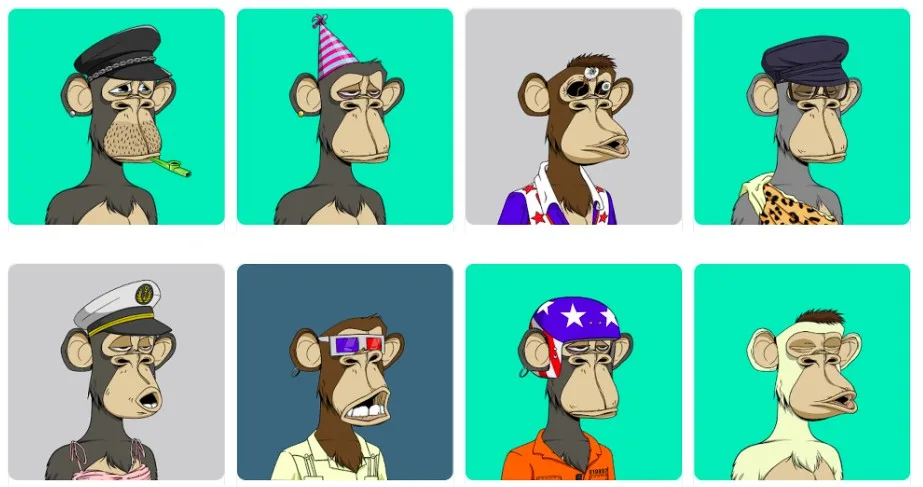In a recent article published on The Conversation, John Hawkins, a Senior Lecturer at the Canberra School of Politics, Economics, and Society, University of Canberra, offers his perspectives on the current state and future prospects of Non-Fungible Tokens (NFTs). Hawkins's insights shed light on the rise and fall of NFTs, raising critical questions about their value and longevity.
“Are NFTs really dead and buried? All signs point to ‘yes’,” writes Hawkins.
“Non-fungible tokens (NFTs) are in dire straits. With the market in a severe downturn, it’s safe to assume the NFT bubble has well and truly burst.”
The NFT Craze: A Brief Overview
NFTs, or Non-Fungible Tokens, first emerged around a decade ago but gained immense popularity in 2021. These blockchain-based tokens are hailed for their ability to certify unique ownership of digital assets, setting them apart from traditional fungible items like currency. However, as Hawkins points out, the underlying value of NFTs has remained a subject of debate, given the ease with which digital assets can be copied.
"The two most traded sets of NFTs are the Bored Apes collection created in April 2021 and the CryptoPunks collection launched in June 2017," Hawkins notes. Both collections consist of 10,000 distinct yet visually similar figures, each with unique characteristics. While the Bored Ape characters have drawn comparisons to the works of artist Jamie Hewlett, known for Tank Girl and Gorillaz, CryptoPunks have received less favourable reviews for their artistic merit.


The Motivation Behind NFT Purchases
Hawkins attributes the initial NFT frenzy to a desire for profit. Similar to speculative tokens like Bitcoin, people flocked to NFTs with hopes of significant financial gains. He explains, "NFTs essentially functioned as a superficially sophisticated form of gambling, devoid of fundamental value." The market saw notable figures like Eminem and rapper KSI investing in NFTs, further fuelling the hype.
“Generally, one would only profit from buying an NFT by finding a “greater fool” willing to pay even more for it. So there was never a shortage of people – including some quite famous ones – talking them up and hoping to instil a fear of missing out,” says Hawkins.
“Eminem bought a Bored Ape that looked a bit like him. Rapper KSI boasted on Twitter about his Bored Ape rising in price,” says Hawkins.
I still think @Eminem is destined to buy my @BoredApeYC one day. pic.twitter.com/JuoNdE446Q
— GeeGazza (@Gee__Gazza) November 2, 2021
The Bursting of the NFT Bubble
Hawkins compares the NFT market to historical speculative bubbles, including the Dutch tulip mania, the dotcom bubble of the late 1990s, and others.
“Centuries ago there were the Dutch tulip, South Sea and Mississippi bubbles,” Hawkins reminds us. “Around 1970, there was a speculative bubble in the shares of nickel miner Poseidon. Then came the Beanie Baby and dotcom booms of the late 1990s – and more recently, meme stocks and Terra-Luna cryptocurrency,” writes Hawkins.
He notes that predicting the precise moment when a speculative asset bubble bursts is challenging, but the NFT market has experienced a downturn.
Recent data reveals a significant decline in interest and trading volumes for NFTs. Prices for NFTs, especially Bored Ape NFTs, have dropped by around 90% from their peak values. A report estimating the value of approximately 73,000 NFTs indicates that about 70,000 of them are now essentially worthless, leaving many holders with devalued assets.
— Kieran (@Genie_93) May 19, 2021
Factors Contributing to the Decline
Hawkins identifies several factors contributing to the NFT market's downturn. These include the loss of novelty, the impact of declining cryptocurrency prices, the collapse of the FTX exchange, and widespread exposure of scams. Additionally, the end of COVID-19 lockdowns provided alternative pastimes, and higher interest rates since mid-2022 made speculative assets less appealing.
A Cautionary Tale
Some individuals even used the perceived value of their NFTs as collateral for loans, which later proved problematic when forced to sell their NFTs at a significant loss.
“Some foolish people had even taken out loans using the “value” of their NFTs as collateral. When the lenders wanted the money back, they were in trouble: forced to sell their NFTs, they got back much less than they’d paid. Fortunately, there weren’t enough people like this to lead to a systemic problem in the financial sector,” writes Hawkins.
The Future of NFTs
Are NFTs gone for good? Hawkins does not anticipate NFTs will vanish entirely. He predicts they will follow the path of past speculative bubbles, gradually fading from public discourse with declining prices. While occasional fluctuations may give die-hard enthusiasts hope, NFTs are likely to become part of the history of speculative follies.
“NFTs probably won’t completely disappear,” predicts Hawkins. “Some subjects of past bubbles are still around. Tulips are still grown in the Netherlands. Poseidon shares, which ran up from 80 cents in September 1969 to $280 in February 1970, are still listed (and currently trading for 2 cents).
“But unless some actual use is found for them, NFTs are likely to fade further from public discussion, with their prices increasingly trending down (although the occasional blip up may give die-hard fans some hope).
“They will probably join the Dutch tulips and dotcoms in the history of speculative follies.”
In conclusion, NFTs, once the darlings of the digital art world and investment community, now face uncertain times. Whether they will experience a resurgence or continue their descent into obscurity remains to be seen, but the story of NFTs serves as a cautionary tale in the ever-evolving landscape of digital assets.

Read also Greek Authors Join Global Outcry Over “Biggest Act of Copyright Theft in History”


